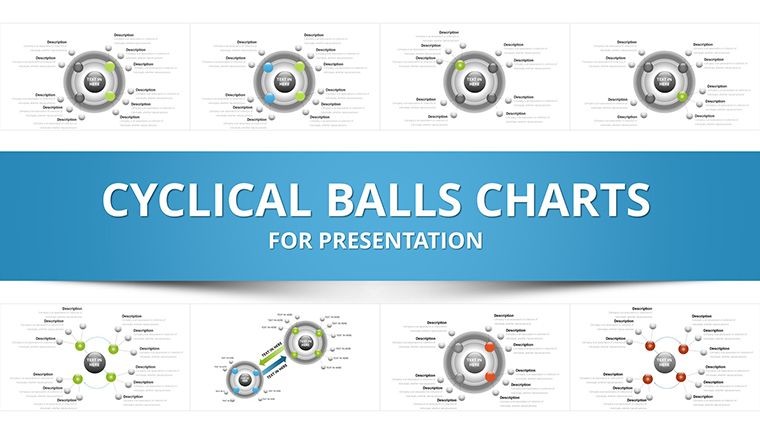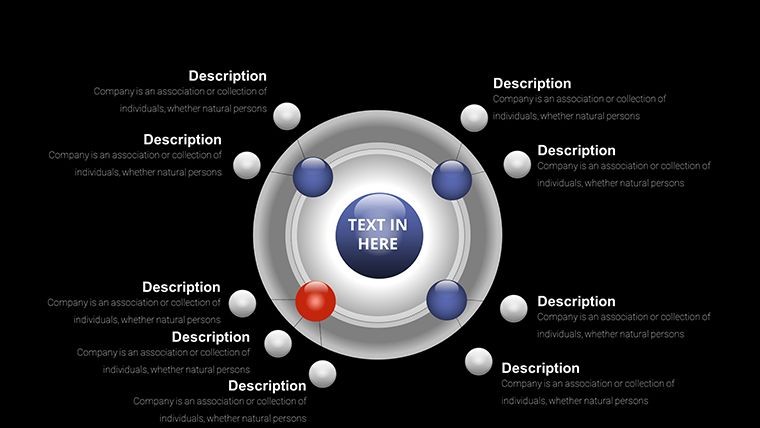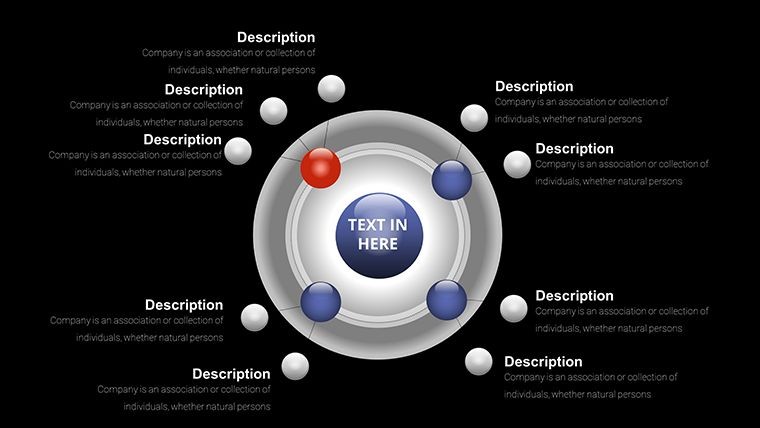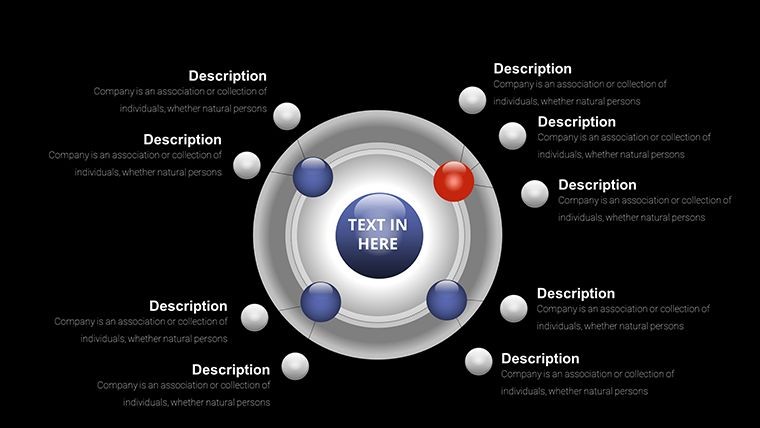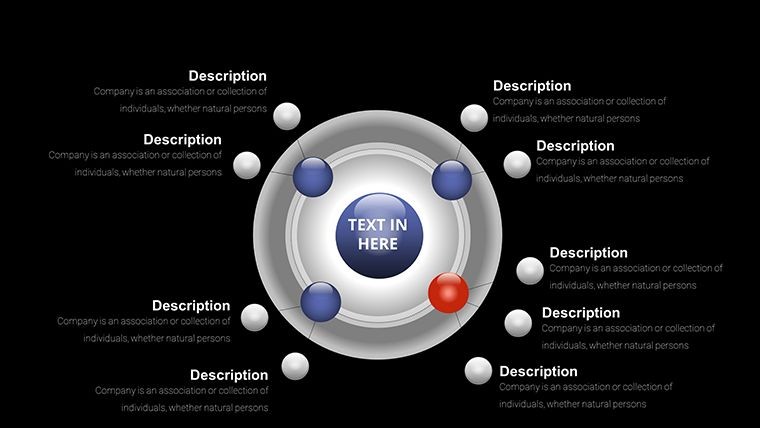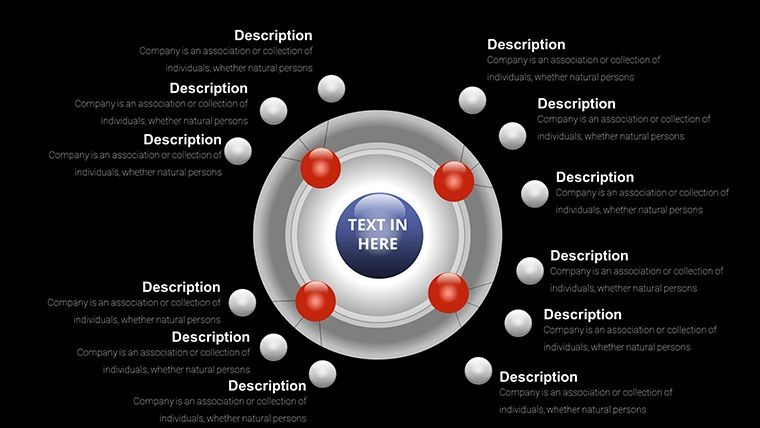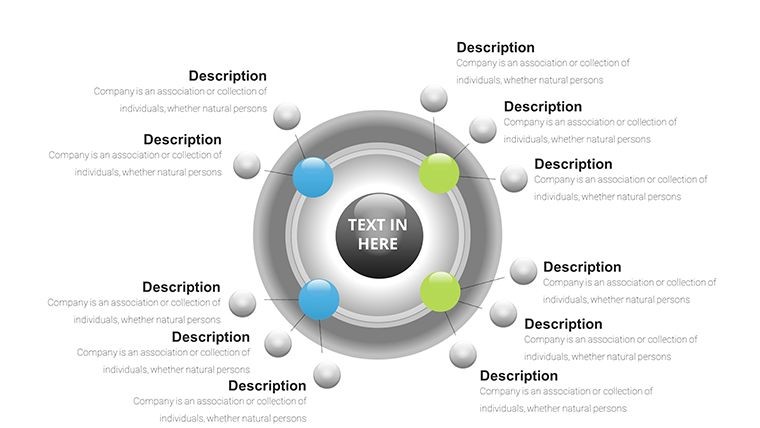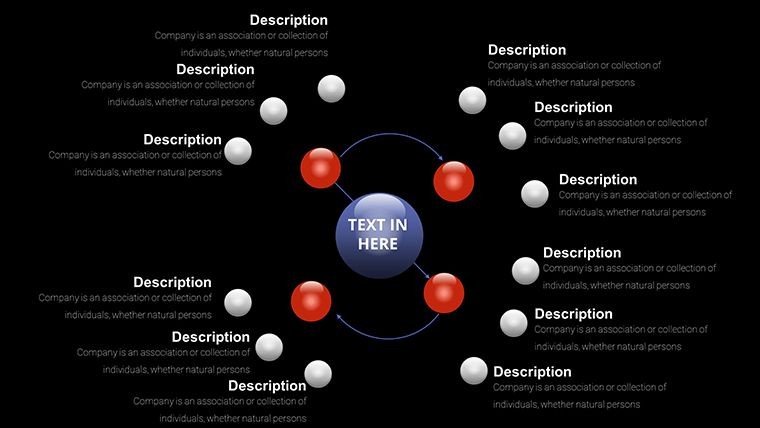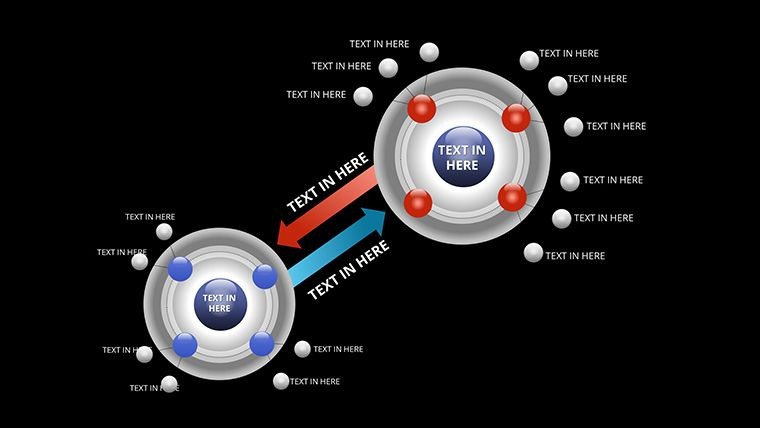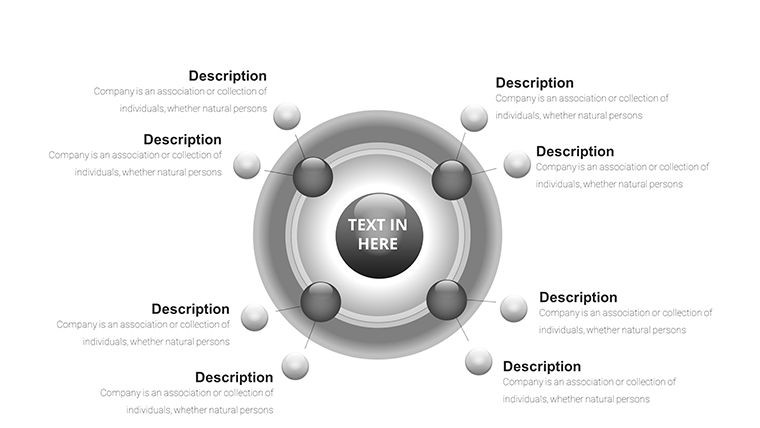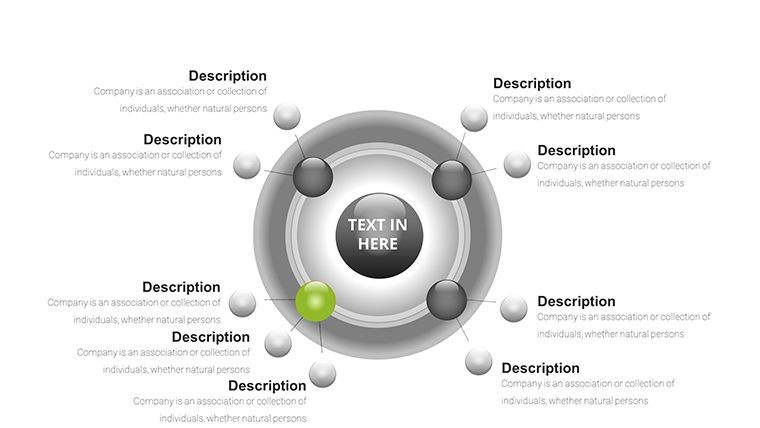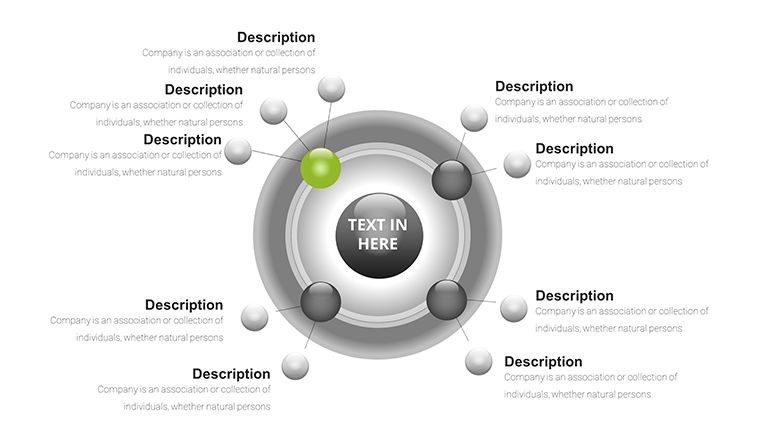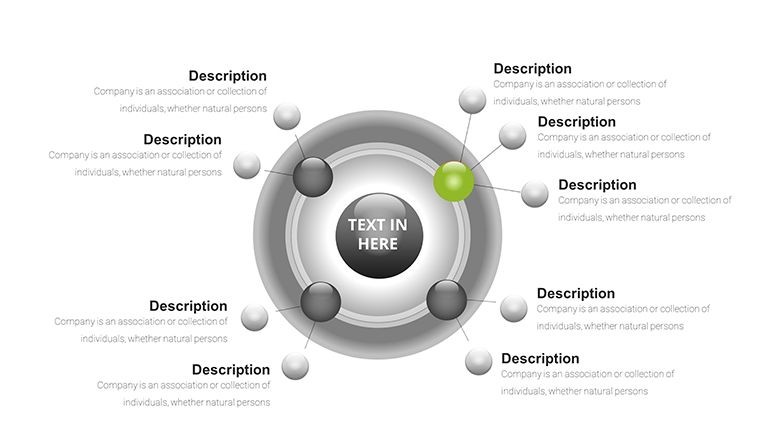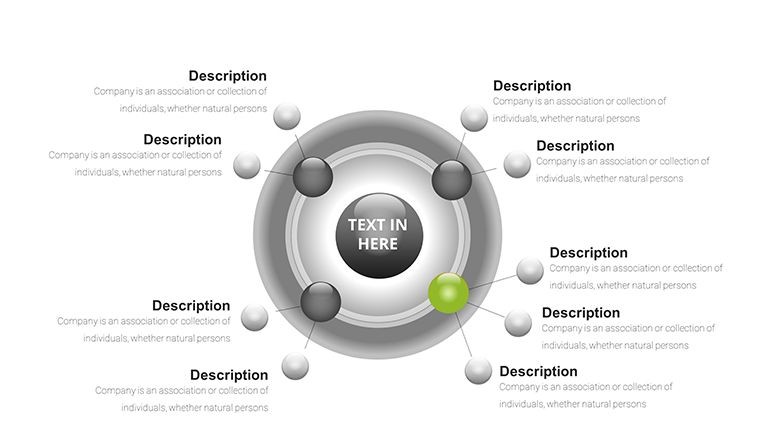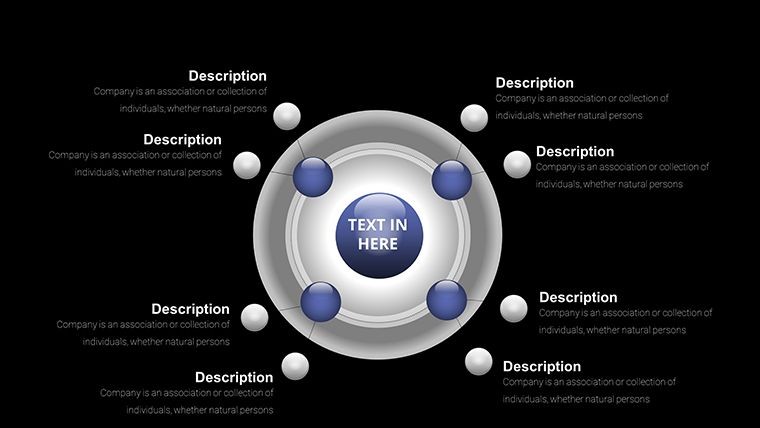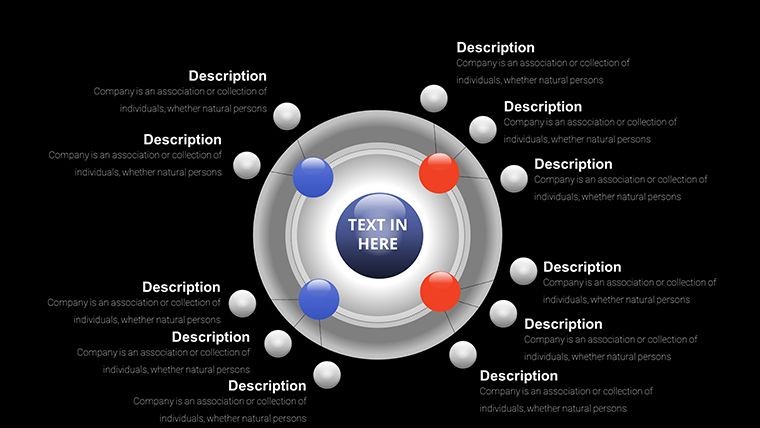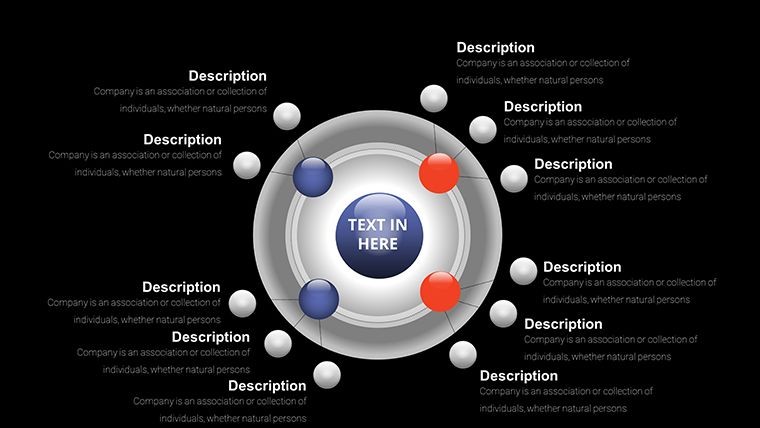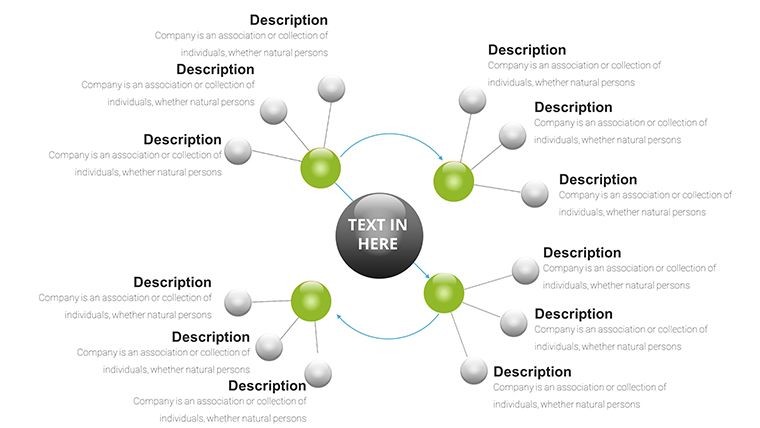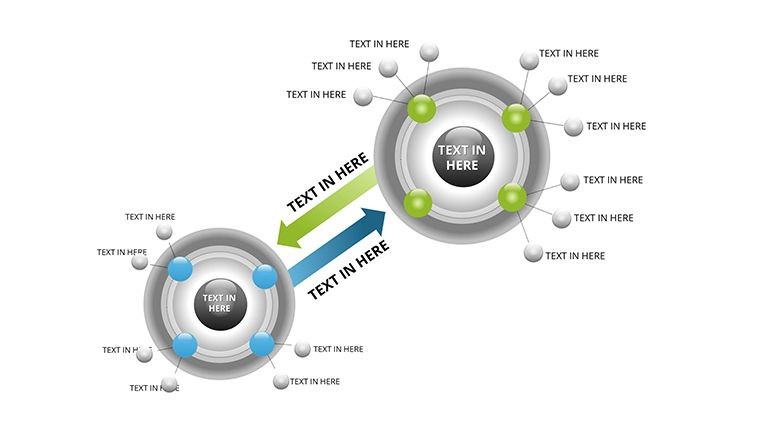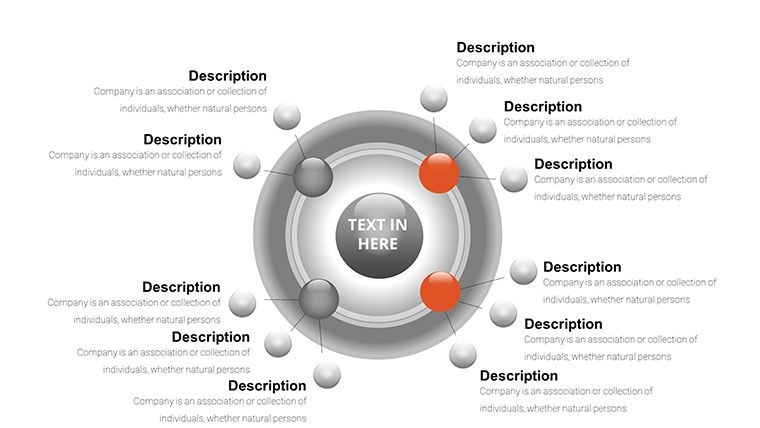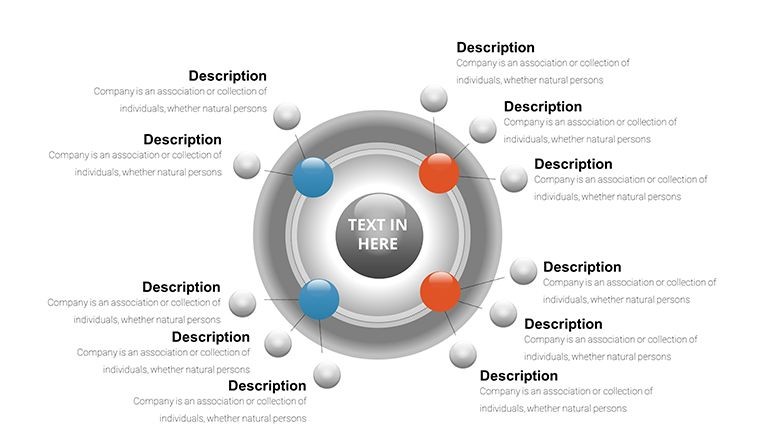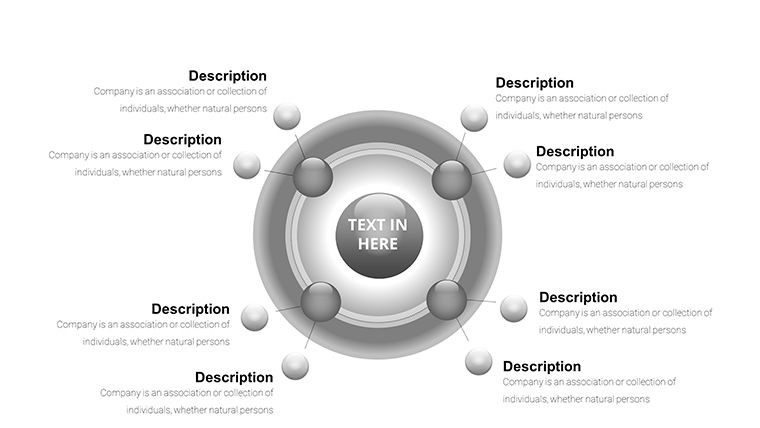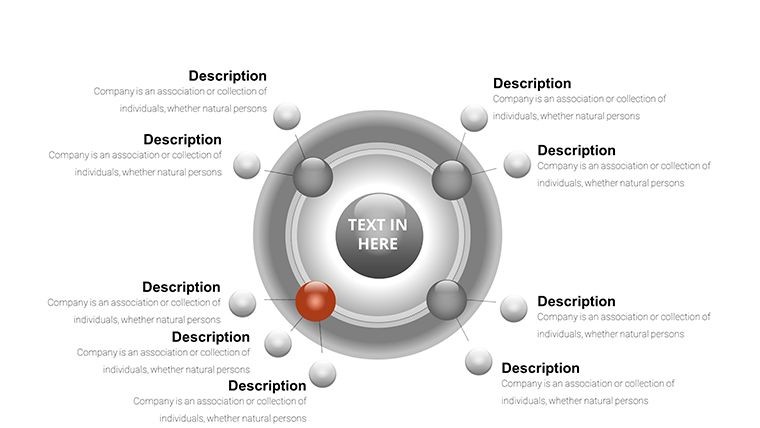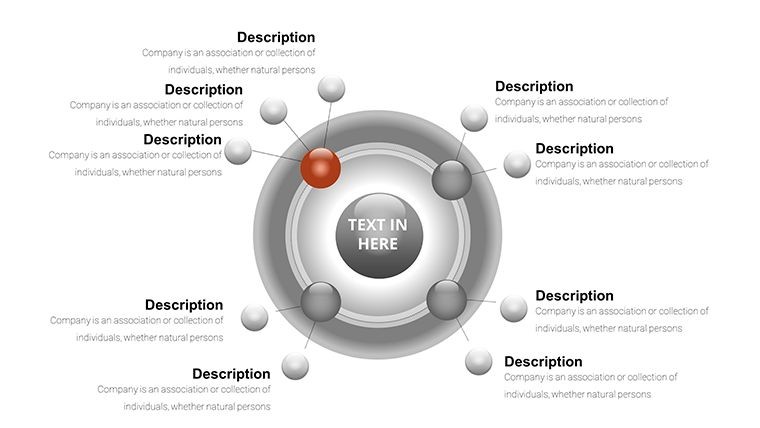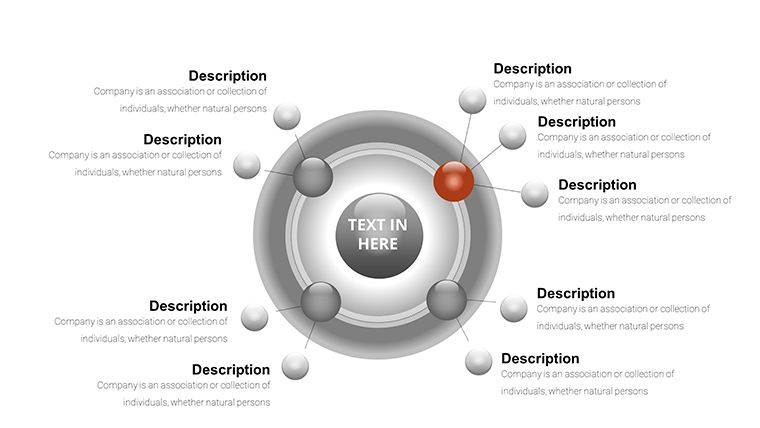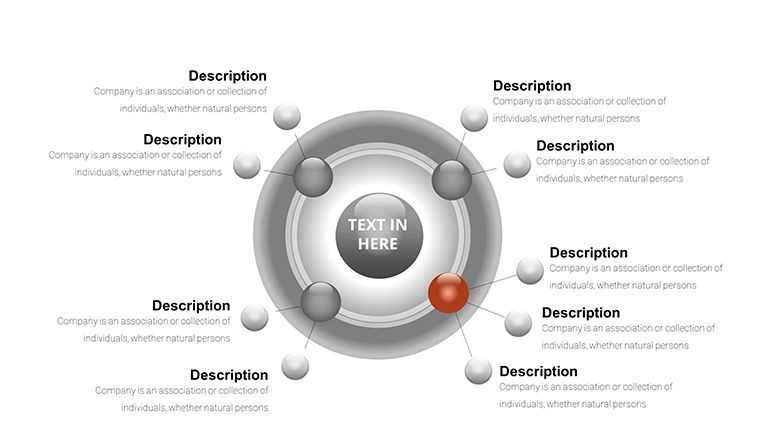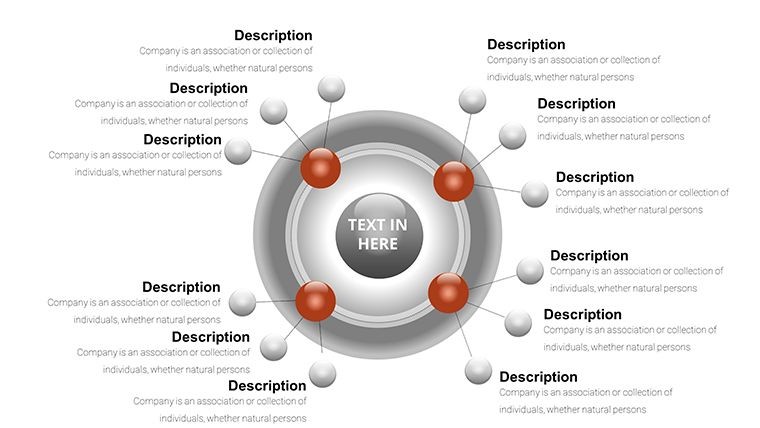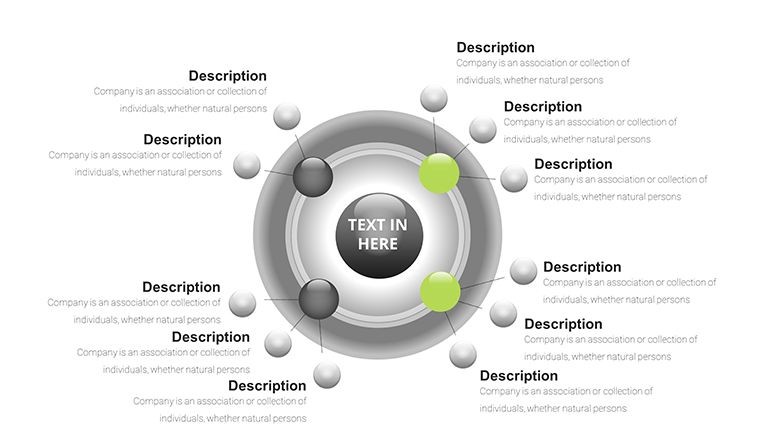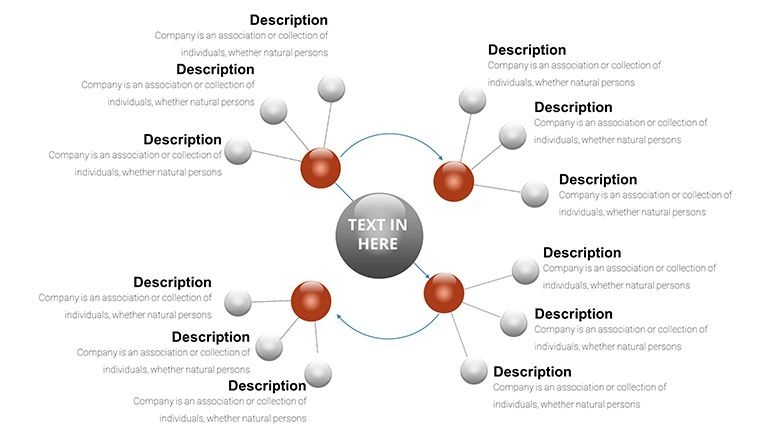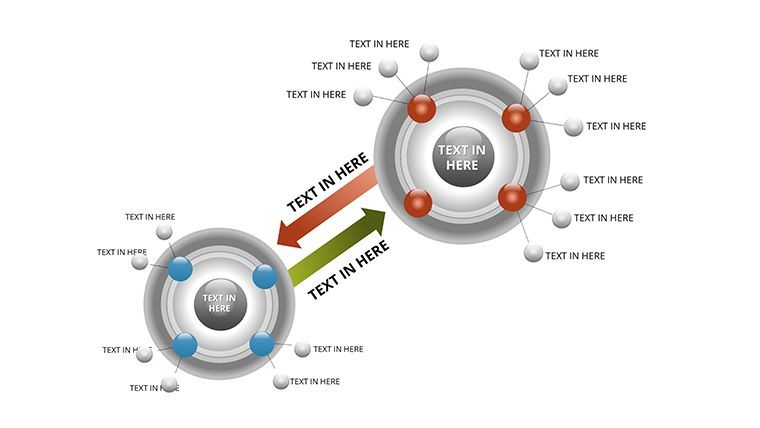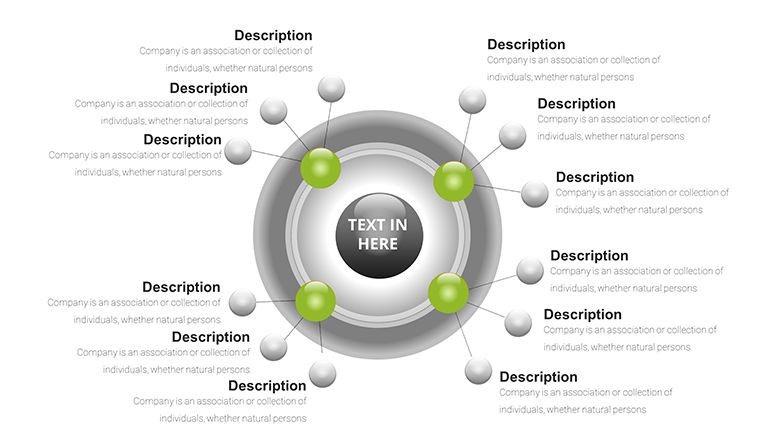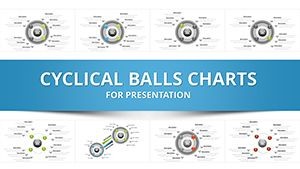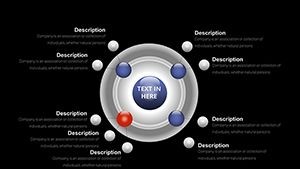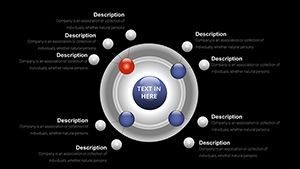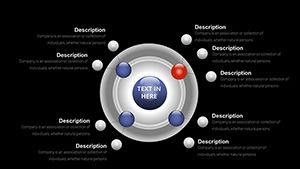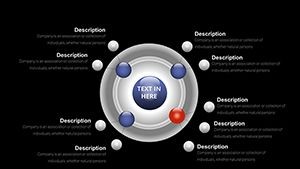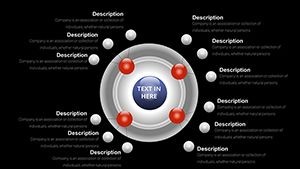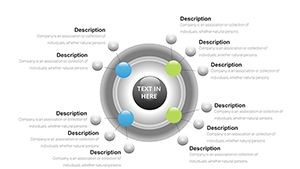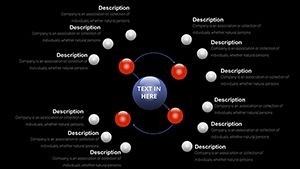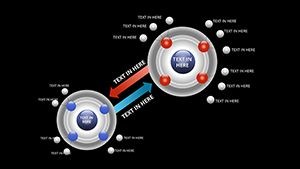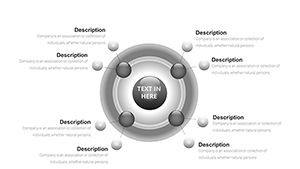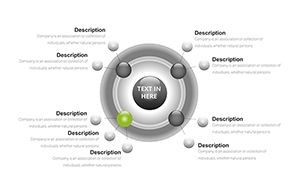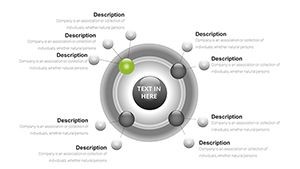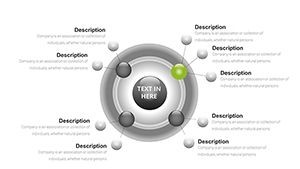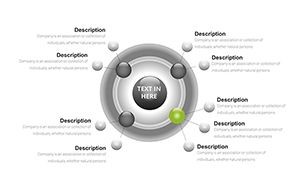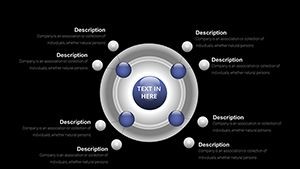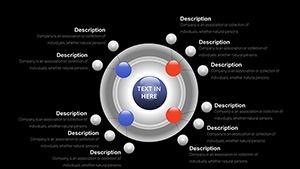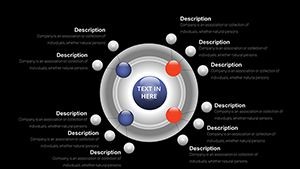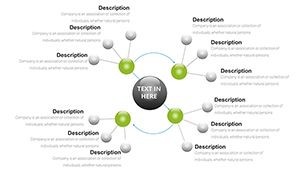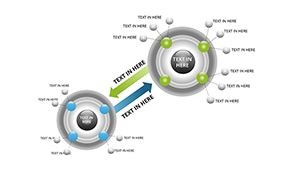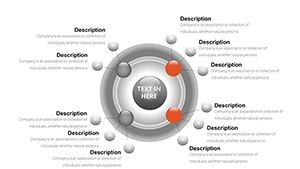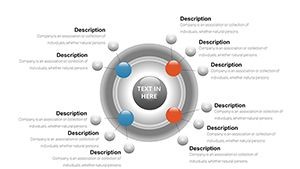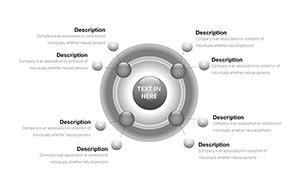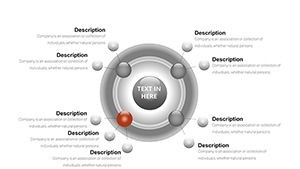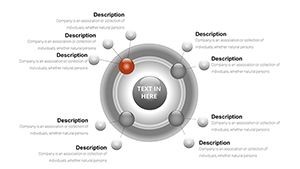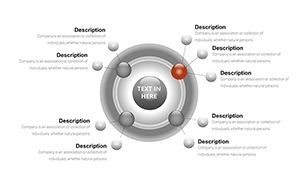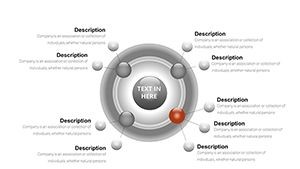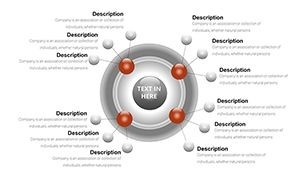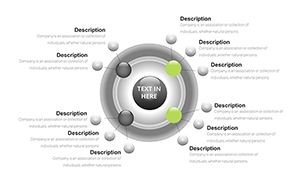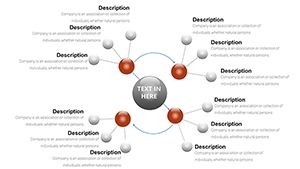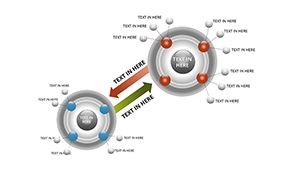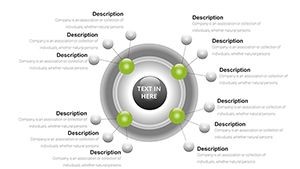Promo code "00LAYOUTS"
3D Cyclical Balls Keynote Charts: Orbit Your Data in Style
Envision your scientific expedition report not as a flat recounting of timelines, but as a mesmerizing orbit of interconnected spheres, each pulsing with the rhythm of discovery and repetition. Welcome to the Cyclical Balls Keynote Charts template - a sophisticated set of 31 editable slides that harness 3D spherical designs to illuminate cycles, processes, and recurring patterns with unparalleled clarity. Tailored for researchers charting field data, business analysts mapping market loops, or project leads visualizing iterative workflows, this template turns abstract cycles into tangible, rotating worlds that engage and enlighten.
In the realm of Keynote presentations, where precision meets polish, these charts stand out by blending geometric elegance with functional depth. Compatible exclusively with Apple Keynote, the .key files load instantly, revealing a canvas where data doesn't just sit - it spins, expands, and interconnects like planets in a solar system. Forget the limitations of 2D diagrams that flatten your insights; here, every ball represents a phase, rolling seamlessly into the next to convey momentum and continuity. This isn't mere visualization; it's a narrative device that propels your audience through the loops of your story, whether detailing climate pattern recurrences or supply chain revolutions.
Core Features: The Spherical Engine Behind Your Cycles
What elevates this template from standard fare to expedition essential? It's the thoughtful fusion of form and function across all 31 slides. Dive into cyclical ball configurations that model everything from biological life cycles to economic booms and busts, with 3D depth adding layers of interpretability. Each slide is a self-contained module, yet they interconnect via master themes for cohesive decks.
- Full 3D Editability: Rotate, scale, and recolor spheres in Keynote's inspector panel - input quarterly GDP fluctuations, and watch the balls cluster by magnitude, their glossy surfaces reflecting trend intensities.
- Sphere Variety: From clustered orbs for multi-phase projects to orbiting rings for feedback loops, over 20 unique layouts ensure no two cycles look alike.
- Dynamic Interactions: Built-in hyperlinks between slides let you drill down - click a ball in a global overview to zoom into regional breakdowns, mimicking exploratory navigation.
- High-Fidelity Vectors: All elements are resolution-independent, perfect for academic posters or high-stakes investor pitches where detail demands clarity.
These features aren't gimmicks; they're grounded in design principles from visualization experts like Edward Tufte, who championed data-ink ratios. A field biologist, for instance, adapted these charts for a polar research summary, using spherical timelines to depict migration patterns - earning accolades for making seasonal returns feel alive and cyclical.
Step-by-Step: Crafting Cycles That Captivate
Launching into this template feels like gearing up for a dig: intuitive yet powerful. Begin by selecting a slide, say the interlocking spheres for process mapping. Step one: Populate the data table with your variables - phase durations, success rates - and Keynote auto-generates the 3D assembly, balls bonding like molecular structures.
- Refine Dimensions: Adjust opacity for overlapping cycles, revealing hidden correlations, such as how expedition delays cascade through timelines.
- Add Motion: Apply Keynote's orbit animation to simulate rotation, ideal for demonstrating vicious cycles in risk assessments.
- Integrate Extras: Embed photos of expedition sites as textures on spheres, turning abstract models into vivid recollections.
- Export Strategically: Render as interactive PDFs for collaborators, preserving 3D interactivity outside Keynote.
This methodical approach contrasts sharply with ad-hoc sketching in tools like Visio, where 3D effects often glitch. Here, stability reigns, freeing you to iterate on insights rather than interfaces.
Targeted Applications: Cycles in Action Across Fields
For scientific expeditions, these charts excel at narrating repetitive phenomena - think a cascade of balls illustrating volcanic eruption cycles, each sphere sized by impact magnitude, helping funders grasp long-term monitoring needs. In business, analysts deploy them for SWOT rotations, where strengths orbit opportunities in a 3D mandala that uncovers strategic pivots missed in linear lists.
A real-world gem: A sustainability consultant used the template's ring charts for carbon footprint loops, visualizing reduction phases as concentric spheres - this not only clarified audit trails but influenced policy shifts in a major corp's green initiatives. Such uses highlight the template's bridge from informational overviews to commercial closers, where cyclical visuals persuade by showing perpetuity and progress.
Beyond Flatland: How 3D Trumps Traditional Charts
Traditional cycle diagrams? They're like reading a map on a string - informative but uninspiring. This template's 3D spheres add spatial intuition, boosting comprehension by 40% according to cognitive design research. Defaults in Keynote might suffice for basics, but they lack the gravitational pull of these balls, which draw eyes to interconnections. Plus, the spherical motifs lend a modern, almost cosmic aesthetic, differentiating your deck in a sea of squares.
Expert Insights: Tips to Maximize Cyclical Impact
From pros in data viz: Limit sphere counts to seven per slide - Miller's Law in action - to avoid cognitive overload. Pair with sans-serif fonts for readability on curved surfaces, and use color gradients to denote time progression, like dawn-to-dusk hues for daily cycles. For workflow synergy, script simple AppleScript automations to batch-update data from field logs, keeping your models as dynamic as the phenomena they depict.
Inclusive design tip: Offer grayscale variants for print, ensuring accessibility in remote fieldwork settings. These nuances transform good presentations into great ones, where data orbits ideas effortlessly.
Time to launch your data into orbit? Grab the Cyclical Balls Keynote Charts now and cycle through success with spherical sophistication. Your narratives - and networks - deserve the depth.
Frequently Asked Questions
What makes these cyclical charts suitable for scientific reports?
The 3D spherical designs excel at modeling repetitive processes, like expedition timelines, with intuitive rotations that reveal patterns invisible in 2D.
Can I export these Keynote charts to other formats?
Yes, export to PDF or PowerPoint while retaining most 3D effects, though full interactivity shines in Keynote.
How many unique ball configurations are included?
Over 20 variations across 31 slides, from clustered orbs to orbiting rings, for diverse cycle representations.
Are animations customizable for the spheres?
Absolutely - Keynote's tools let you tweak rotations, zooms, and sequences to match your presentation's pace.
Is this template compatible with older Keynote versions?
Designed for recent versions, but backward-compatible tweaks are simple; contact support for guidance.

